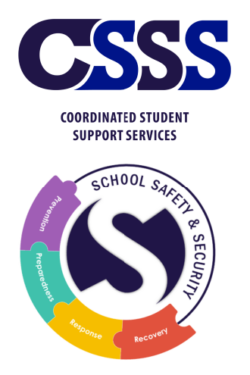Suicide Prevention FAQ
Why should Nebraska schools be concerned about suicide?
Suicide was the second leading cause of death for people ages 10-14 and 20-34. Facts About Suicide | Suicide Prevention | CDC
Suicide was the second leading cause of death for people ages 10-14 and 20-34. Facts About Suicide | Suicide Prevention | CDC
- See Nebraska School Suicide Resource Guide Section 1
- Check the Nebraska Department of Education website for updates about training opportunities.
- See Nebraska School Suicide Resource Guide Section 3
School districts can decide from among these four trainings, with detailed information on the NDE School Safety website:
-
- The Jason Foundation (select from several one-hour options)
- Kognito – Practice-based digital learning experiences
- Making Educators Partners in Youth Suicide
- Prevention, Question, Persuade, Refer (QPR)
See Nebraska Suicide Resource Guide – Section 4 on page 17 Suicide Risk Screeners and Procedures.
- See Nebraska School Suicide Resource Guide Section 6
- NDE_Suicide_Resource_Guide.pdf
- Nebraska Statewide Suicide Prevention Plan (2022-2025)
- Suicide Prevention Resources in Nebraska
- Suicide Prevention Resources | Prevent Suicide | Nebraska unl
- Resources for Communities | Nebraska Youth Suicide Prevention
The first step is for the district to adopt a school policy identifying the critical prevention, intervention, and postvention components. An example is available on the NDE School Safety website in the Nebraska Suicide Resource Guide. Nebraska Statewide Suicide Prevention Plan (2022-2025) NDE Suicide Resource Guide
We are reminded to take every sign seriously. The first step is ensuring the student is not left alone and that parents are notified. A risk screener can then be administered to determine the next steps. These steps should be clearly outlined in the district’s procedures. Examples are available in the NDE Nebraska Suicide Resource Guide – Section 4.
Planning for re-entry support should begin while the student is absent, including scheduling a meeting with parents and developing a safety plan. Teachers should also be provided strategies for effectively supporting students as they return. The Nebraska Suicide Resource Guide – Section 4 provides a training module and examples for being proactive in supporting students during re-entry.
Your school’s procedures should outline steps for how to respond following a suicide. The procedures will include utilizing your school’s trained crisis response/Psychological First Aid Training(PFA-S) team and mental health professionals to provide intensive support. The Nebraska Suicide Resource Guide – Section 5 provides resources to assist in developing this process. The procedures must be clearly defined and ready to equip school personnel for an immediate, effective response.
- See Nebraska School Suicide Resource Guide Section 3
Numerous evidence-based curricula are currently available, and one such curriculum highlighted by NDE’s research is the Hazelden Lifelines curriculum. What sets this curriculum apart is its inclusivity, offering lessons tailored for elementary, middle, and high school students, along with specialized training components for staff and parents.
The Hazelden Lifelines® trilogy, comprising Lifelines Prevention, Lifelines Intervention, and Lifelines Postvention, constitutes a comprehensive school-based suicide prevention program. This program adopts a three-pronged perspective to address youth suicide. The overarching objective is to establish a secure learning environment where all suicides are prevented. Recognizing the importance of equipping school staff to identify and respond to potentially at-risk students, Hazelden Lifelines also emphasizes the need for a thoughtful response in the unfortunate event of a suicide occurrence.







